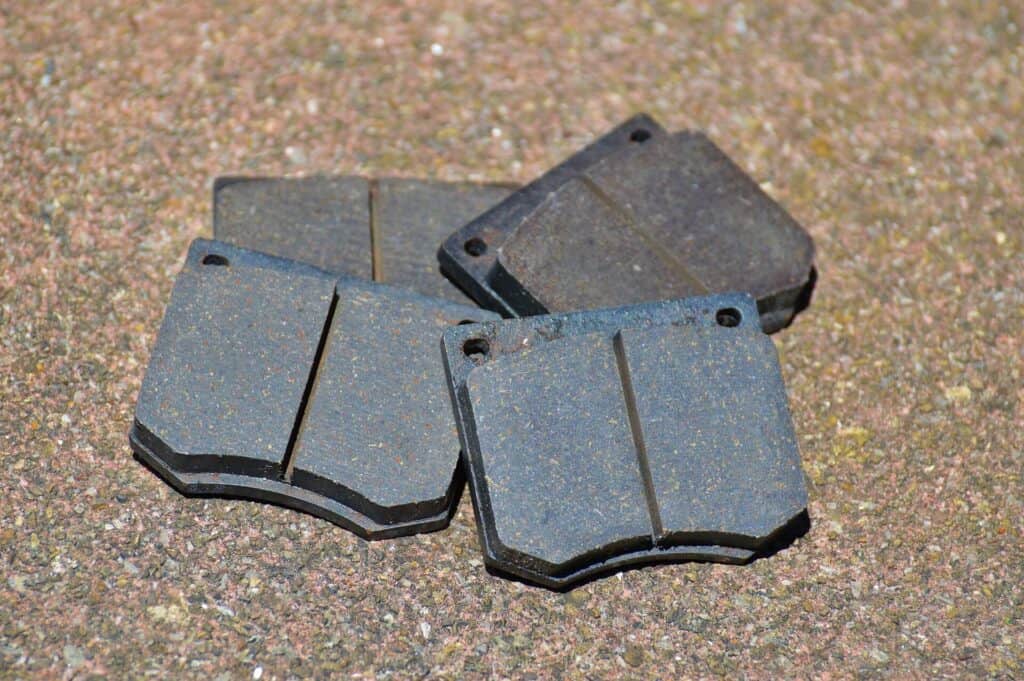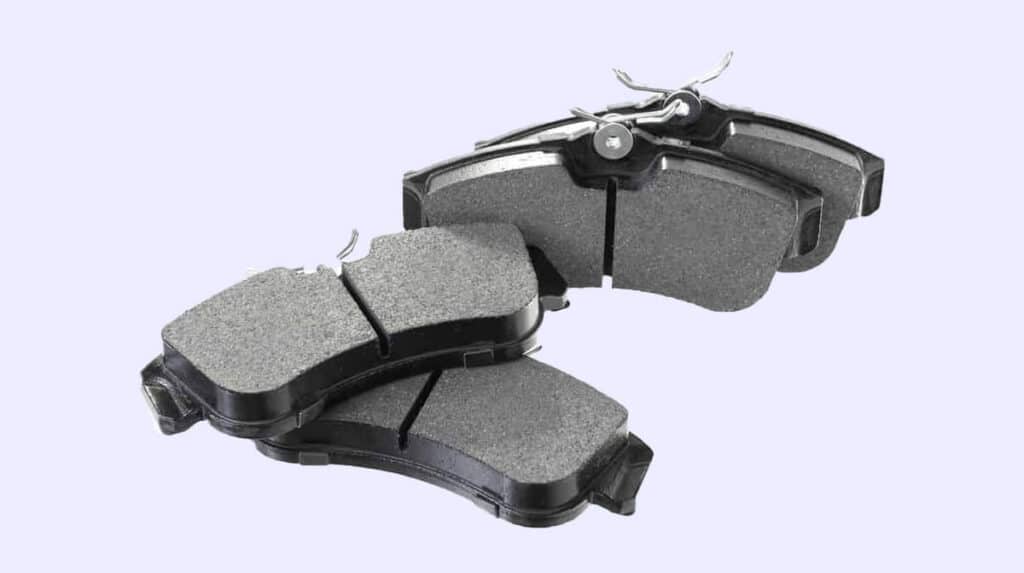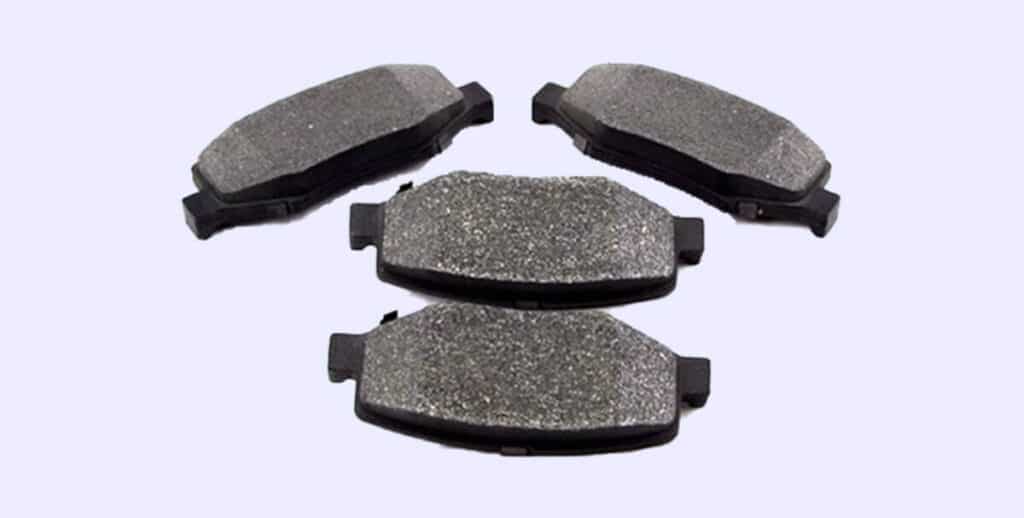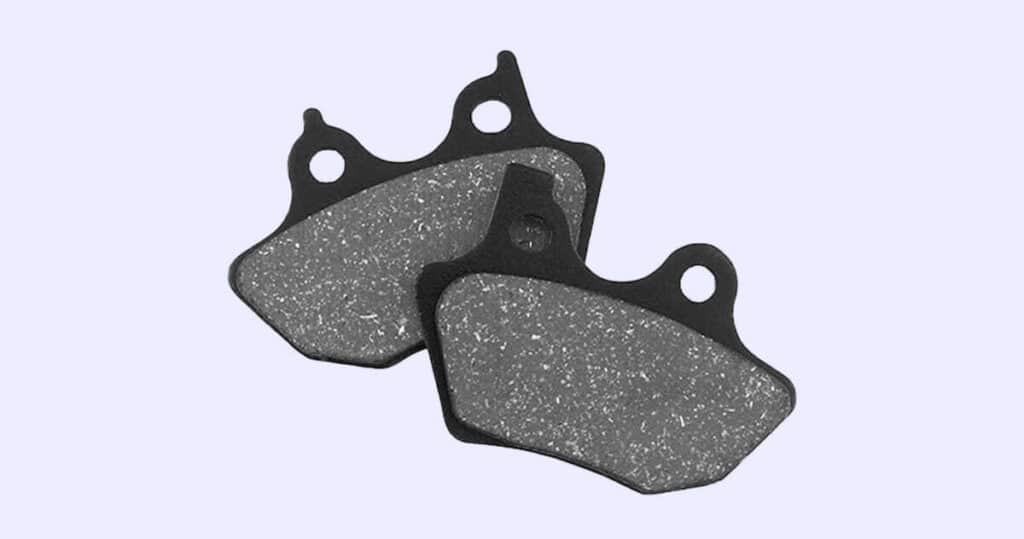Understanding the Importance of Brake Pad Selection
Your car’s braking system plays a crucial role in ensuring safety on the road, and selecting the right type of brake pads can make a significant difference in your vehicle’s stopping performance. This article aims to guide you in choosing the best brake pads for your car, considering various factors and exploring the pros and cons of different pad materials.
Assessing Your Driving Needs: Factors to Consider
1. Driving Style and Habits: Your driving style (aggressive vs. conservative) and habits (frequent hard braking) will impact the type of brake pad best suited for your needs.
2. Vehicle Type and Weight: Heavier vehicles or those used for towing may require brake pads with a higher heat tolerance and greater stopping power.
3. Typical Driving Conditions and Environment: Frequent stop-and-go traffic, mountainous terrain, or high-performance driving may necessitate more robust brake pads.
4. Performance Expectations and Priorities: Determine your priorities (noise, dust, stopping power) when choosing brake pad materials.

An Overview of Brake Pad Materials
A. Organic Brake Pads: Made from materials like rubber, glass, and fibers, these pads are quieter and have a softer feel but may wear down faster and generate more brake dust.
B. Semi-Metallic Brake Pads: Containing metal fibers, these pads offer better heat dissipation and higher friction coefficients. However, they can be noisy and may wear down rotors faster than other pad types.
C. Ceramic Brake Pads: Made from ceramic fibers and filler materials, ceramic brake pads offer consistent braking performance, minimal noise, and low brake dust, but they may be more expensive.
Comparing Brake Pad Materials: Pros and Cons
In order to make an informed decision about the best brake pad material for your car, it’s essential to understand the pros and cons of each type. Here is a comparison of organic, semi-metallic, and ceramic brake pad materials:
Organic Brake Pads
Pros
1. Quieter braking: Organic brake pads are known for their quiet operation, reducing brake noise and making for a more comfortable driving experience.
2. Softer pedal feel: Drivers who prefer a softer brake pedal feel may appreciate the less aggressive nature of organic brake pads.
3. Less aggressive on rotors: Organic pads tend to be less abrasive on brake rotors, which can prolong the life of the rotors.
4. Generally more affordable: Organic brake pads are often less expensive than their semi-metallic and ceramic counterparts, making them a cost-effective option.
Cons
1. Faster wear: Organic brake pads tend to wear out more quickly than other types of brake pads, requiring more frequent replacement.
2. More brake dust: Organic brake pads can produce a higher amount of brake dust, which can accumulate on wheels and affect aesthetics.
3. Lower performance in extreme conditions: Organic brake pads may not perform as well in high-temperature or demanding driving conditions, such as racing or heavy towing.
Semi-Metallic Brake Pads:
Pros
1. Better heat dissipation: Semi-metallic brake pads are more effective at dissipating heat, which can improve braking performance and reduce the risk of brake fade.
2. Higher friction coefficients: Semi-metallic pads generally have higher friction coefficients, providing better overall braking performance.
3. Longer lifespan: Semi-metallic brake pads tend to last longer than organic brake pads, requiring less frequent replacement.
Cons
1. Noisier braking: Semi-metallic brake pads can produce more noise during braking, which some drivers may find unpleasant.
2. More aggressive on rotors: The metallic composition of these brake pads can cause faster wear on rotors, potentially requiring more frequent rotor replacement.
3. Heavier: Semi-metallic brake pads are heavier than other types, which can affect fuel efficiency and vehicle performance.
Ceramic Brake Pads
Pros
1. Consistent braking performance: Ceramic brake pads provide reliable and consistent braking performance in a wide range of driving conditions.
2. Minimal noise: Ceramic brake pads are known for their quiet operation, making for a comfortable driving experience.
3. Low brake dust: Ceramic pads produce less brake dust than other types, helping to keep wheels clean and maintain a polished appearance.
Cons
1. More expensive: Ceramic brake pads tend to be more expensive than organic and semi-metallic brake pads, which may be a consideration for budget-conscious drivers.
2. Less effective in extreme cold: Ceramic brake pads may not perform as well in extremely cold temperatures, as they require more heat to generate optimal friction.
3. May not be suitable for heavy-duty applications: Ceramic brake pads may not be the best choice for heavy-duty vehicles or those used for towing, as they may not provide the same level of performance as semi-metallic pads in these conditions.

| Feature | Organic Pad | Semi Metallic Pad | Ceramic Pad |
| Price | Low | Medium | High |
| Performance applications | Low | Good | Low |
| Lowest noise | Medium | High | Low |
| Brake pad wear | Fast | Medium | Slow |
| Brake dust levels | Medium | High | Low |
| Extreme low temperatures | Good | Fair | Good |
| Extreme high temperatures | Fair | Good | Excellent |
| Purpose | Daily street driving | Racing, heavy-duty workload | Daily street driving |
Please note that the performance of brake pads at extreme temperatures may vary depending on the specific product or manufacturer.
Understanding the Role of Brake Rotors
Brake rotors play a critical role in your vehicle’s braking system. They work in conjunction with the brake pads to generate the friction required to slow down or stop your car. Understanding the function and types of brake rotors is essential for ensuring optimal braking performance and safety.
When the brake pedal is pressed, hydraulic pressure is applied to the brake calipers, which in turn force the brake pads against the brake rotors. The friction created between the brake pads and rotors converts the kinetic energy of the moving vehicle into heat, effectively slowing or stopping the car. As a result, brake rotors need to be durable and capable of withstanding high temperatures generated during the braking process.
There are several types of brake rotors available on the market, each with its own set of characteristics:
1. Smooth or Solid Rotors: These are the most common type of brake rotors and are typically found on everyday passenger cars. They provide a large surface area for the brake pads to grip, offering consistent braking performance in standard driving conditions.
2. Slotted Rotors: These rotors have slots or grooves cut into their surface, which helps to dissipate heat more effectively and keep the brake pads clean. Slotted rotors are popular for high-performance vehicles and those driven in demanding conditions, as they help reduce the risk of brake fade.
3. Drilled Rotors: Drilled rotors have holes drilled through their surface, which aids in heat dissipation and reduces brake pad glazing. They are often used in high-performance and racing applications, where effective heat management is crucial. However, drilled rotors may be more prone to cracking under extreme stress.
4. Drilled and Slotted Rotors: These rotors combine the benefits of both drilled and slotted designs, offering improved heat dissipation, reduced brake fade, and enhanced braking performance. They are commonly used in high-performance vehicles and those driven aggressively.
When selecting brake pads, it’s important to consider the type of brake rotors your vehicle is equipped with, as certain brake pad materials may be better suited to specific rotor designs. Matching the right brake pads and rotors can help maximize your vehicle’s braking performance, ensuring optimal safety and drivability.
Here are some general guidelines on which brake pad materials work best with different rotor designs:
Smooth or Solid Rotors
• Organic Brake Pads: Suitable for everyday driving conditions and provide a smooth, quiet braking experience with less rotor wear.
• Semi-Metallic Brake Pads: Suitable for more demanding driving conditions, offering better heat dissipation and increased friction. They may cause more rotor wear than organic pads.
• Ceramic Brake Pads: Compatible with smooth rotors, providing consistent braking performance with low noise and minimal brake dust. They are gentle on rotors but can be more expensive.
Slotted Rotors
• Semi-Metallic Brake Pads: The increased friction and heat dissipation capabilities of semi-metallic pads make them a good match for slotted rotors, especially in high-performance or heavy-duty applications.
• Ceramic Brake Pads: These pads can also be used with slotted rotors, as they offer consistent performance and low noise levels. However, they may not provide the same level of heat dissipation as semi-metallic pads.
Drilled Rotors
• Semi-Metallic Brake Pads: The high friction and heat dissipation properties of semi-metallic pads make them suitable for use with drilled rotors in high-performance or racing applications.
• Ceramic Brake Pads: Ceramic pads can work with drilled rotors, but they may not offer the same level of heat management as semi-metallic pads in extreme conditions.
Drilled and Slotted Rotors
• Semi-Metallic Brake Pads: The combination of drilled and slotted rotors with semi-metallic pads is ideal for high-performance vehicles and aggressive driving, as it provides optimal heat dissipation and maximum friction.
• Ceramic Brake Pads: Ceramic pads can also be used with drilled and slotted rotors, offering a balance between performance and low noise levels. However, they might not perform as well as semi-metallic pads in extreme conditions.
Ultimately, the best brake pad material and rotor design combination depends on your specific driving needs and preferences. It’s essential to consider factors like driving style, vehicle type, and typical driving conditions when choosing the right brake pads and rotors for your vehicle. Consulting a professional mechanic or brake specialist can also help you make an informed decision.

Tips for Shopping for Brake Pads
When shopping for brake pads, it’s essential to consider various factors to ensure you make an informed decision and select the right brake pads for your vehicle. Here are some tips to help you choose the best brake pads:
1. Assess your driving needs: Consider your driving style, habits, vehicle type, and the typical driving conditions you encounter. These factors will help you determine which brake pad material and performance level are best suited for your needs.
2. Research brake pad materials: Understand the differences between organic, semi-metallic, and ceramic brake pad materials. Each type has its advantages and disadvantages, so knowing the characteristics of each will help you make a more informed decision.
3. Brands and manufacturers: Research reputable brake pad brands and manufacturers to ensure you’re purchasing a high-quality product. Read reviews and seek recommendations from friends, family, or online forums to find reliable and trusted brands.
4. Price vs. quality: While it might be tempting to opt for the cheapest brake pads available, it’s essential to find a balance between price and quality. Investing in higher-quality brake pads will likely result in better braking performance, increased safety, and longer-lasting components.
5. Seek professional advice: Consult a professional mechanic or brake specialist for advice on the best brake pads for your vehicle. They can provide valuable insight based on their experience and expertise.
6. Compatibility with your vehicle: Make sure the brake pads you select are compatible with your vehicle’s make and model. Always check the manufacturer’s specifications and guidelines to ensure proper fit and functionality.
7. Consider rotor compatibility: The right combination of brake pads and rotors is crucial for optimal braking performance. If you plan on upgrading or changing your rotors, ensure that the brake pads you choose are compatible with the rotor design.
8. Warranty and guarantees: Look for brake pads that come with a warranty or guarantee, as this can provide peace of mind and protection against manufacturing defects or premature wear.
By keeping these tips in mind when shopping for brake pads, you’ll be better equipped to choose the right brake pads for your car, ensuring optimal braking performance and safety on the road.
The Importance of Regular Brake Maintenance and Inspections
Regular brake system maintenance and inspections are crucial to ensure optimal braking performance and safety. Schedule routine check-ups to identify worn or damaged components and replace them as needed. Proper maintenance will extend the life of your brake pads and rotors, providing consistent and reliable stopping power.
Conclusion: Making an Informed Decision on the Best Brake Pads for Your Car
Selecting the best brake pads for your car can be a daunting task, but understanding the different types of brake pad materials, their pros and cons, and how they relate to your driving needs can make the decision-making process easier. Assess your driving habits, vehicle type, and desired performance to determine the most suitable brake pad material for your specific needs. Don’t forget the importance of matching the brake pads with compatible rotors and maintaining your braking system regularly. By making an informed decision and investing in high-quality brake pads, you can enhance your vehicle’s stopping performance, improve safety, and enjoy a smoother driving experience.

Here’s why Uchanics should be your top choice for brake repairs:
• Experience brake pad replacements and brake servicing right at your doorstep
• Effortless online booking for your convenience
• Transparent, competitive pricing
• Skilled mobile technicians at your service
• Utilizing top-notch equipment and superior replacement parts
• Capability to complete 90% of repairs on-site, eliminating the need for a trip to the auto repair shop
• A reassuring 12-month, 20,000 km warranty for peace of mind
• Covering over 40 cities in Ontario including Oshawa, Ajax, Toronto, Vaughan, North York, Brampton, Mississauga and more
To receive a precise estimate for the cost of replacing your brake pads, simply request a Free quote by clicking here.
